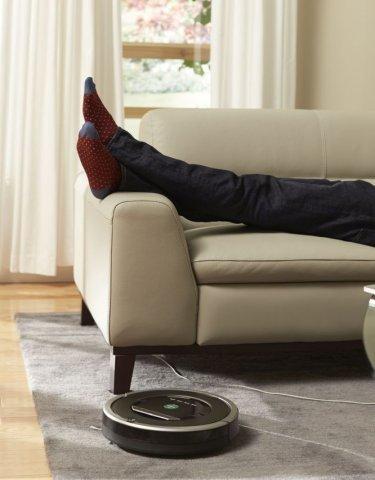Of course, to use such a map, you first need to create it. We can commission a robot to create a map during standard cleaning. The first one will take a bit longer, because the device, in order to assess the size of the room, first builds a map to clean methodically and intelligently in subsequent cycles.
Imprint Smart Mapping is also a significant time saver, according to research conducted by engineers creating this solution, Roomba needs 20% less time to clean the room if it has a map than it would do without a plan, and only based on its sensors and default algorithms. 20% may seem like a small profit, but if cleaning the room takes, say, 20 minutes with mapping, then without this function it is already 25 minutes. If you need to clean up quickly before guests arrive, or God forbid your mother-in-law, every minute is worth its weight in gold.
The big advantage of room mapping is also the ability to create virtual walls, i.e. fences of places that we do not want the robot to clean or approach. It can be, for example, the edge of the stairs or some cumbersome piece of furniture that is an obstacle during cleaning, or simply to define the boundary of a given room, which must be cleaned first before the robot can move to the next one.
VSLAM technology
Okay, but you might ask how this Imprint Smart Mapping technology works so well. Well, I am in a hurry to explain. Everything happens thanks to vSLAM technology - Vision Simultaneous Localization and Mapping. It is nothing more than a camera that collects topographic data of our rooms not only at the height of the robot, but in full 3D, recording its shape and potential obstacles. The robot is able to read and process up to 230,400 points per second and methodically create an accurate map, which it will later use when planning cleaning or navigating to a specific place in our house / room. What's more, thanks to this solution, Roomba is able to monitor all changes on an ongoing basis, e.g. a moved armchair or table, which could disrupt the cleaning process and effectively bypass it.
However, a real hit in models such as Roomba i7, s9 and 900 series if it is possible to start cleaning from the place where the robot finished it last time, e.g. due to weakening battery. The robot, when it detects that it lacks energy, stops cleaning, goes to the base to recharge it and returns after several dozen minutes to cleaning exactly where it has finished. Thanks to this, we can remotely clean the entire apartment, even when we are not there to supervise the robot. This is real freedom.

Dirt Detect technology
Finally, the last technology I'd like to cover today is Dirt Detect. As the name suggests, this is a dirt detection function. It works on the basis of piezoelectric sensors that constantly monitor the amount of dirt collected by the vacuum cleaner and as soon as they detect an increased amount of dirt, they provide the robot with information that it should be cleaned more carefully here.
The advantages of this technology are twofold, not only independently decides where to clean better, but most of all it will not leave a dirty place only half cleaned. The robot will keep cleaning until the cleaned surface is completely clean. Cheap Chinese robotic vacuum cleaners cannot do such tricks ;-).
Only these three technologies mentioned above have a huge impact on the quality and speed of cleaning the robot. However, it must be remembered that iRobot uses many more innovative solutions in its devices that have one goal, to improve the comfort in our own home / apartment. All this is made up of not only advanced technologies, but also the high quality of the devices themselves and a perfect service that allows you to solve all problems within a few days.
The article was created in cooperation with the iRobot company








